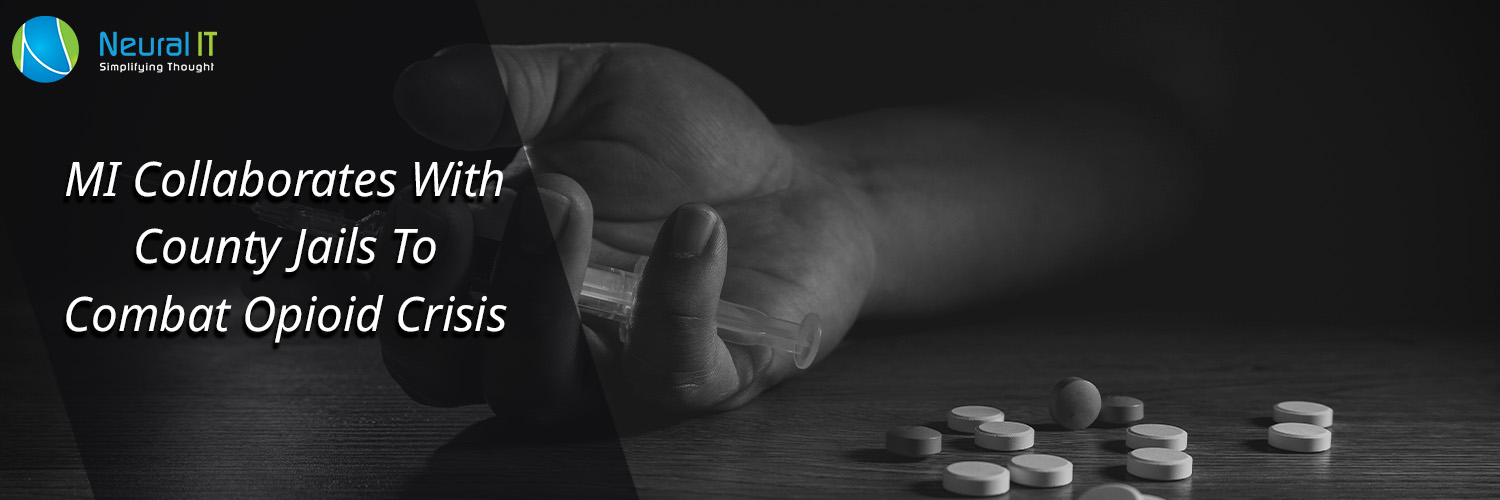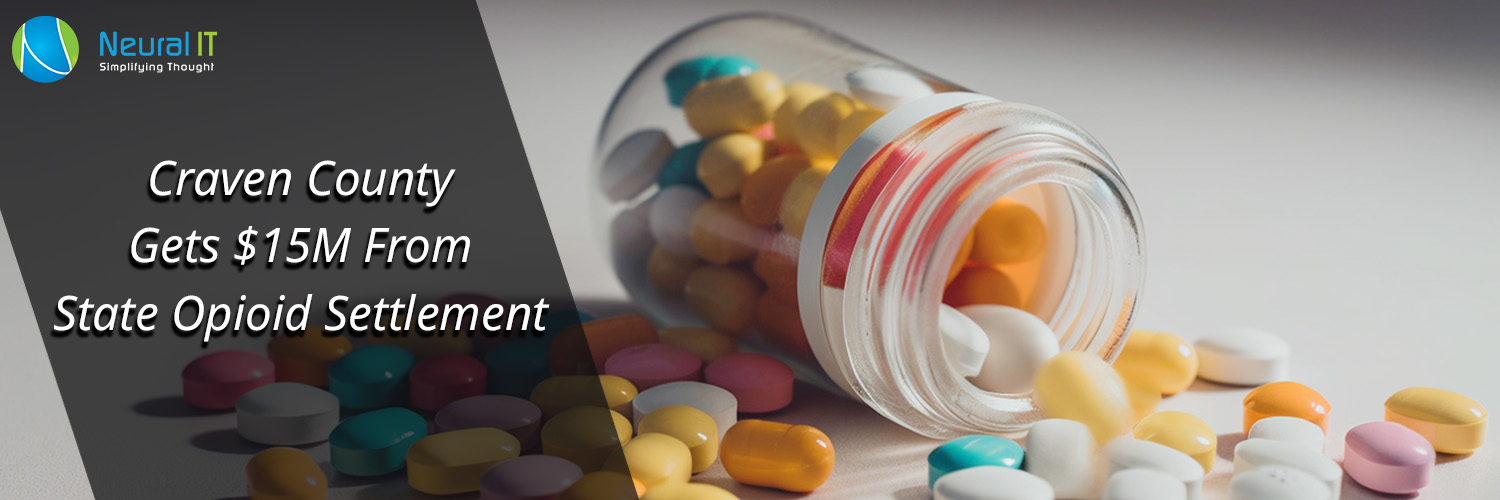Weekly Mass Torts Bulletin 2023-July-17
MI Collaborates With County Jails To Combat Opioid Crisis

In an effort to decrease opioid overdoses, the Michigan Department of Health and Human Services is collaborating with county prisons to provide prescriptions to more people in need throughout the state of Michigan.
According to research, those who are jailed have a greater chance of overdosing or perhaps dying from an overdose after being let out of prison. According to the undersheriff of Eaton County, when prisoners are released from prison, they frequently resume their previous drug usage, which their bodies cannot handle after being isolated for so long. He continued by saying that prisoners were being freed from jails around the nation and then passing away from an opioid overdose right away.
The sheriff said the disease of substance use disorder can be treated while the inmates are in custody through intervention while they are in jail, and return them to the community in a much stronger state.
Using money from the opioid settlement, the Michigan Department of Health and Human Services hopes to lower the risk of overdoses by extending programs for opioid use disorder in county prisons throughout the state. Medication, in particular, can save lives by lowering the chance of death when an offender is released. Treatment can assist and can even save lives.
According to a professional therapist, the more skills and resources we can give an offender while they are detained, the better off they will be when they are released. History has shown that substance use problems are highly stigmatized. We want to support that recovery because we know how difficult it is for people to reach that point when they are ready for change and recovery. This voluntary program is quite aggressive and ambitious.
Enabling prisoners to concentrate on their healing and prevent relapse. One of Michigan's top institutions for providing opioid therapy in a correctional environment is the Eaton County Correctional The undersheriff for the county said that thorough discharge planning is done in order to continue aiding prisoners after their release.
Louisville & Kentucky To Get Over $57M In Opioid Settlement

A $57 million opioid settlement is announced for Louisville Metro Government and Jefferson County, which would be paid for 20 years.
By the end of 2023, the city is expected to receive the first $7 million installment. Three pharmaceutical distributors—AmerisourceBergen, Cardinal Health, and McKesson—, as well as one pharmaceutical manufacturer—Janssen, a division of Johnson & Johnson—, will provide the funding. According to a statement released by the Mayor's Office, nationwide settlements with CVS, Walgreens, Walmart, Teva, and Allergan were also concluded last month.
505 of the 2,100 overdose fatalities that occurred in Kentucky last year occurred among residents of the Louisville metro region. The interim chief health strategist for the Louisville Metro Department of Public Health and Wellness stated that while the $57 million would have an impact, it will not be enough to end Louisville's opioid issue.
Organizations engaged in harm reduction will get $1.5 million. The funds will support community engagement initiatives, education, overdose prevention, the provision of Narcan, and HIV and Hepatitis C tests. According to a news release from the city, additional objectives include broadening the reach of the Kentucky Harm Reduction Coalition to include more members of the Latino community and residents of West Louisville.
$250,000 will be used for "collaborative projects," which will involve employing an outside assessor to judge how well the funds are being allocated and a staff member to oversee a neighborhood advisory board.
Public applications will be accepted, and $5.3 million will be given out. The Mayor's Office expects to start this in the autumn. An Opioid Settlement Distribution Advisory Board, whose members will be selected by the mayor, will evaluate proposals. Before funds can be provided, the Louisville Metro Council must authorise all expenditures.
For the following 18 years, the Mayor's Office will submit financing suggestions yearly. The funds are distinct from the state's opioid settlement fund, which is managed by the Opioid Abatement Advisory Commission of Kentucky, which was established in 2021 by House Bill 427. Through the Opioid Abatement Advisory Commission website, organizations or governmental organizations can apply for federal assistance. According to the commission's FAQ website, individuals cannot submit a grant application.
Following a number of federal cases, businesses that produced, marketed, or distributed opioid medications will deliver over $50 billion in settlement funds to local governments nationwide. BrownGreer, the company hired by the court to handle the settlements, has provided the organization with the precise amount of money each city or county is getting, down to the penny.
Craven County Gets $15M From State Opioid Settlement

At the Riverfront Convention Centre, the Craven County Board of Commissioners conducted a special meeting to discuss the opioid settlement funds and Memorandum of Agreement (MOA).
The MOA mandates a single yearly meeting at which all towns must be present in order to offer feedback on potential uses for the cash from the opioid settlement, according to the director of Craven County Human Resources. Officials looked at some of the opioid statistics relating to overdose, overdose mortality, and emergency department/EMS data in Craven County after the director stated that the county had an overview of the opioid crisis data collection.
The Craven County Opioid Task Force has been renamed Craven County Opioid Epidemic Response, the director of the group said during the meeting. She claims that when commissioners became aware of the county's opioid problem for the first time in 2017, they assembled local residents to create an opioid task group. The task force was provided funding for community engagement so that it could focus primarily on initiatives for enforcement, prevention, and education. The program has been allowed to grow now that Craven County will receive money from the opioid settlement.
The director also went through the MOA agreement and all of the options that are given for counties to pick from. She stated that we must abide by the MOA, which precisely outlines the choices counties and municipalities can select from, in order to spend those settlement payments.
The solutions offered by Option A comprise things like recovery support programs, evidence-based addiction therapy, naloxone distribution, syringe service programs, addiction treatment for people who are incarcerated, and more.
The director states that before implementing the actions under option B, the Craven County Opioid Epidemic Response Team must first go through a 14-step strategic planning process. They haven't finished it yet, so they're currently concentrating more on option A's tactics.
North Carolina has seen enormous and ongoing destruction as a result of the opioid crisis. More than 300 opioid overdoses were recorded in Craven County in 2022, which also had the second-highest incidence of opioid overdose emergency department visits in the state of North Carolina.
Several counties and towns filed lawsuits to hold various businesses responsible for their role in the production, promotion, and distribution of prescription opioid medicines, according to an executive summary by the NCACC on the opioid litigation settlement.
According to the NCACC executive summary, the federal cases, which comprise around 3,000 claims from almost every state, have been merged into Multi-District Litigation (MDL).
According to the NCACC, settlement funds were distributed among the states depending on the population and local effect of the opioid crisis as established by public health statistics.
The Community Opioid Resources Engine for North Carolina (CORE-NC) estimates that from 2022 through 2038, county and municipal governments in the state would receive more than $1 billion, or more precisely, $1,163,742,414. According to CORE-NC, Craven County will receive $15.5 million in total over the course of 18 years.
Craven received $1,116,187 in opioid settlement monies last year, and $2,127,574 will be distributed to it for the fiscal year 2023–2024. The NCACC claims that while pharmaceutical distribution businesses failed to keep an eye on suspicious purchases of prescription opioids, opioid manufacturers downplayed the consequences of long-term opioid usage for those with chronic pain.
According to the NCACC, four businesses—Johnson & Johnson, AmerisourceBergen, Cardinal Health, and McKesson—have declared their readiness to settle all pending legal claims against them for a total of $26 billion.
The director claims that as a result of the settlements and bankruptcies, a total of $47 billion was obtained nationally. $26 billion was raised in the first wave in 2021, and $21 billion in the second wave in 2022.

